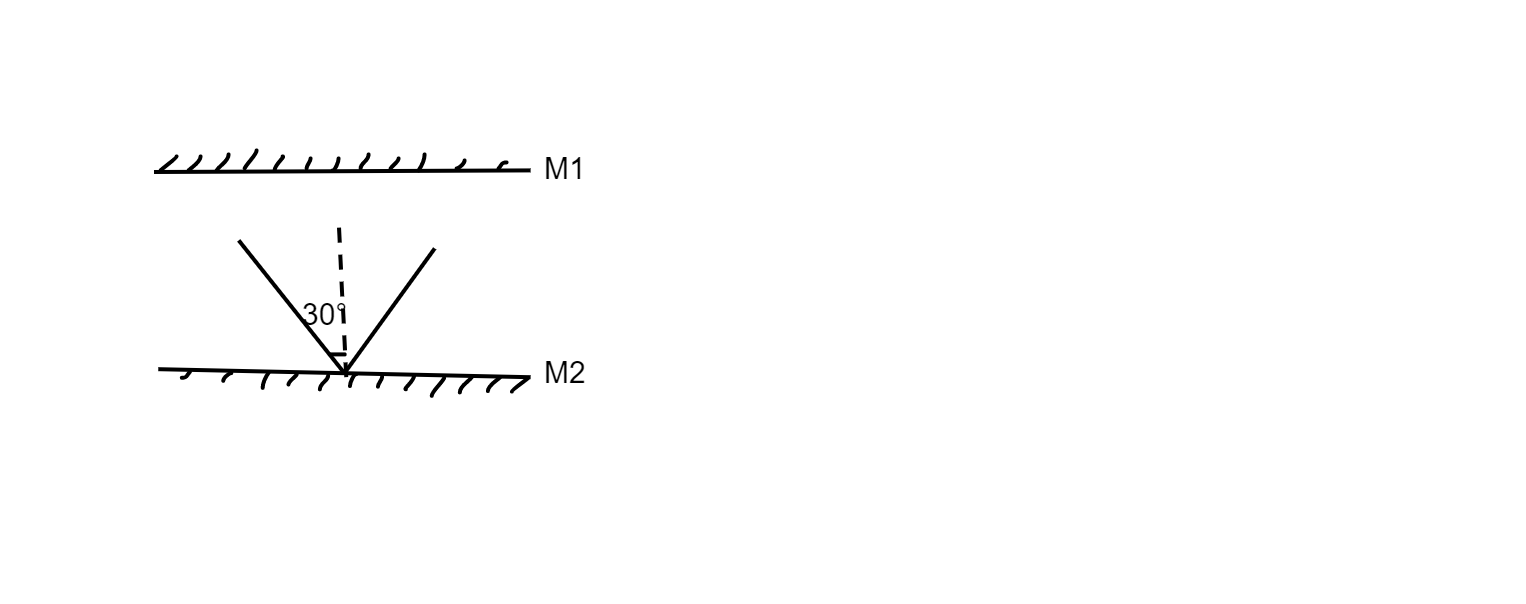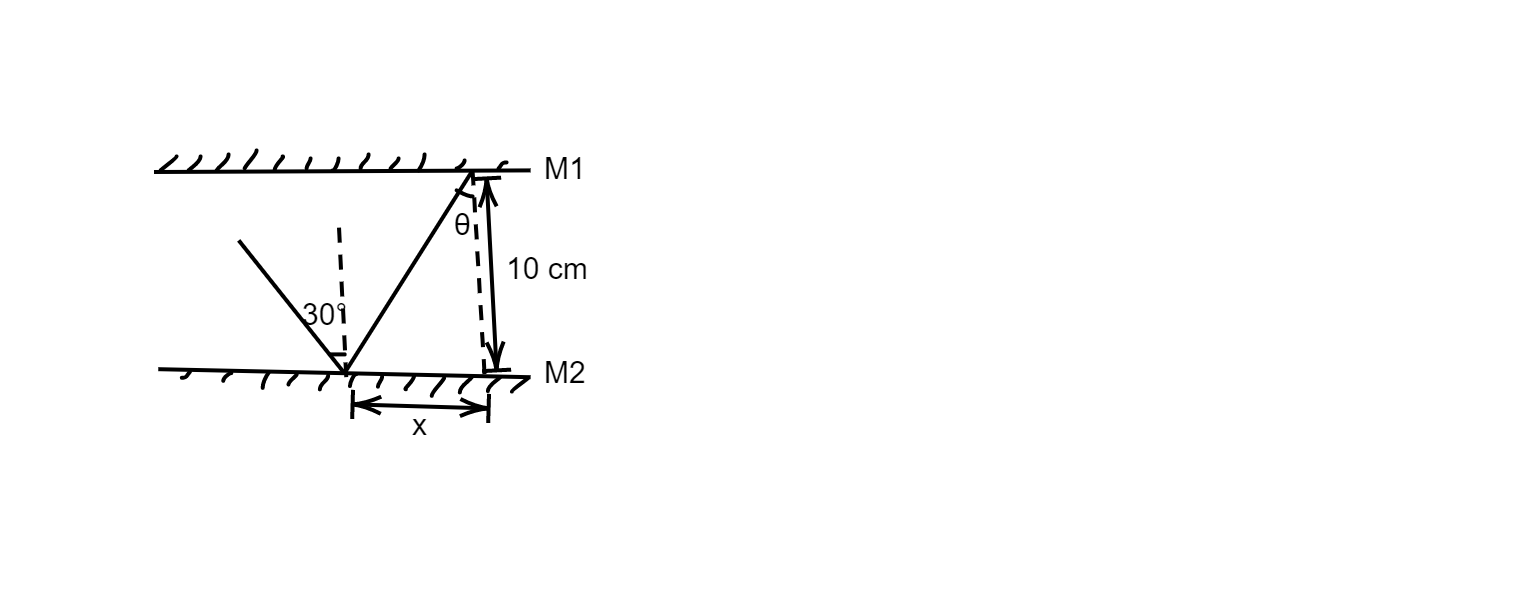
Two plane mirror


Answer
441.3k+ views
Hint: To solve these types of questions we first have to find out the horizontal distance that the light ray travels before being incident on another plane mirror and then eventually calculate the number of such reflections made by the light ray to final reach the end of the plane mirror.
Complete step-by-step solution:
Let us assume that the light ray travels a horizontal distance

Now, we know that the plane mirrors
Now, we know that the angle of incidence and angle of reflection are equal in case of reflection from a plane mirror, hence the angle of reflection of the light ray when reflected from mirror
Now, to calculate the total number of reflections that light undergoes before reaching the other end we will divide the value of total distance that the light ra has to cover to reach the end by the distance that light rays travels in one reflection. Hence the total number of reflections will be:
Note: To solve these types of questions, we need to remember the basic rules of reflection like the angle of incidence made by the incident light with the normal is equal to the angle of reflection that the reflected ray after reflection makes with the normal.
Complete step-by-step solution:
Let us assume that the light ray travels a horizontal distance

Now, we know that the plane mirrors
Now, we know that the angle of incidence and angle of reflection are equal in case of reflection from a plane mirror, hence the angle of reflection of the light ray when reflected from mirror
Now, to calculate the total number of reflections that light undergoes before reaching the other end we will divide the value of total distance that the light ra has to cover to reach the end by the distance that light rays travels in one reflection. Hence the total number of reflections will be:
Note: To solve these types of questions, we need to remember the basic rules of reflection like the angle of incidence made by the incident light with the normal is equal to the angle of reflection that the reflected ray after reflection makes with the normal.
Latest Vedantu courses for you
Grade 10 | MAHARASHTRABOARD | SCHOOL | English
Vedantu 10 Maharashtra Pro Lite (2025-26)
School Full course for MAHARASHTRABOARD students
₹33,300 per year
Recently Updated Pages
Master Class 12 Business Studies: Engaging Questions & Answers for Success

Master Class 12 English: Engaging Questions & Answers for Success

Master Class 12 Economics: Engaging Questions & Answers for Success

Master Class 12 Social Science: Engaging Questions & Answers for Success

Master Class 12 Maths: Engaging Questions & Answers for Success

Master Class 12 Chemistry: Engaging Questions & Answers for Success

Trending doubts
Which one of the following is a true fish A Jellyfish class 12 biology CBSE

Which are the Top 10 Largest Countries of the World?

a Tabulate the differences in the characteristics of class 12 chemistry CBSE

Why is the cell called the structural and functional class 12 biology CBSE

Differentiate between homogeneous and heterogeneous class 12 chemistry CBSE

Derive an expression for electric potential at point class 12 physics CBSE




